Manuel R Freire
The Multiscenario Multienvironment BioSecure Multimodal Database (BMDB)
Nov 17, 2021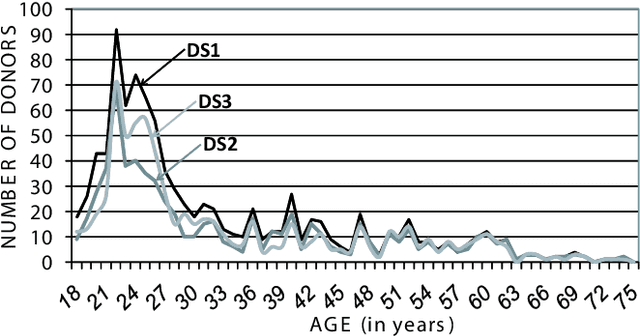


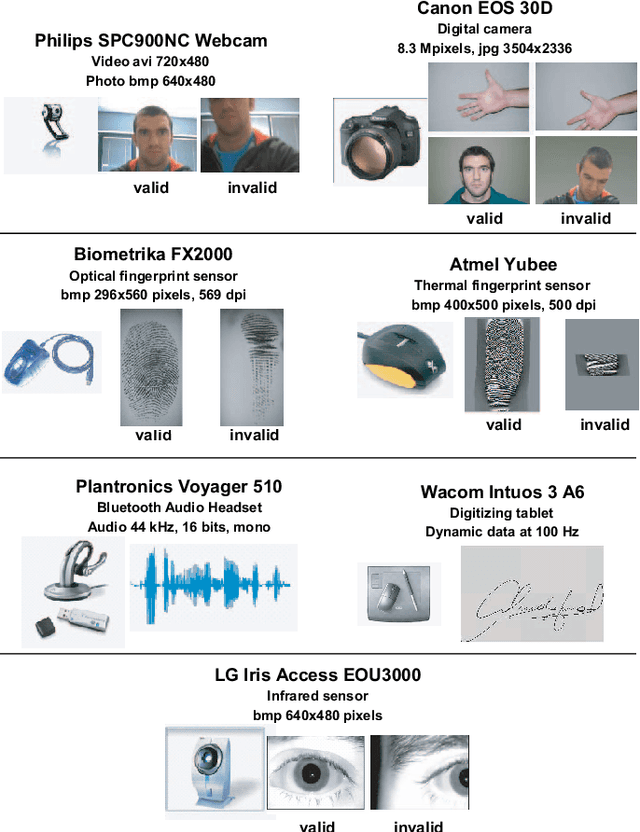
Abstract:A new multimodal biometric database designed and acquired within the framework of the European BioSecure Network of Excellence is presented. It is comprised of more than 600 individuals acquired simultaneously in three scenarios: 1) over the Internet, 2) in an office environment with desktop PC, and 3) in indoor/outdoor environments with mobile portable hardware. The three scenarios include a common part of audio/video data. Also, signature and fingerprint data have been acquired both with desktop PC and mobile portable hardware. Additionally, hand and iris data were acquired in the second scenario using desktop PC. Acquisition has been conducted by 11 European institutions. Additional features of the BioSecure Multimodal Database (BMDB) are: two acquisition sessions, several sensors in certain modalities, balanced gender and age distributions, multimodal realistic scenarios with simple and quick tasks per modality, cross-European diversity, availability of demographic data, and compatibility with other multimodal databases. The novel acquisition conditions of the BMDB allow us to perform new challenging research and evaluation of either monomodal or multimodal biometric systems, as in the recent BioSecure Multimodal Evaluation campaign. A description of this campaign including baseline results of individual modalities from the new database is also given. The database is expected to be available for research purposes through the BioSecure Association during 2008
BiosecurID: a multimodal biometric database
Nov 02, 2021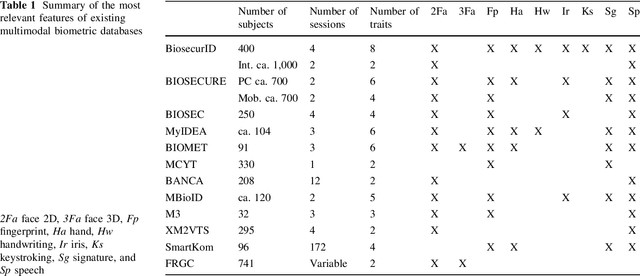
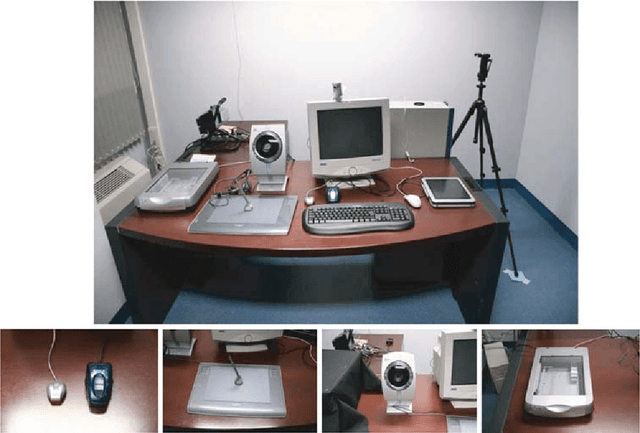
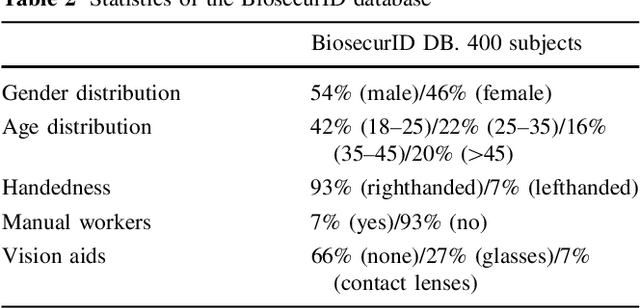
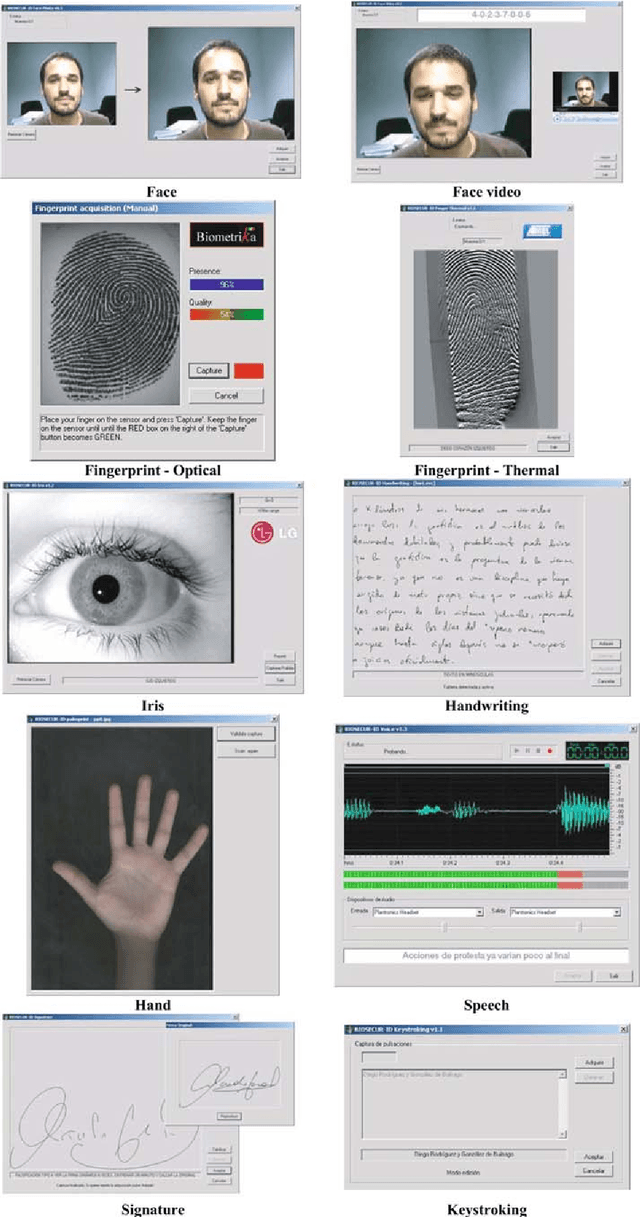
Abstract:A new multimodal biometric database, acquired in the framework of the BiosecurID project, is presented together with the description of the acquisition setup and protocol. The database includes eight unimodal biometric traits, namely: speech, iris, face (still images, videos of talking faces), handwritten signature and handwritten text (on-line dynamic signals, off-line scanned images), fingerprints (acquired with two different sensors), hand (palmprint, contour-geometry) and keystroking. The database comprises 400 subjects and presents features such as: realistic acquisition scenario, balanced gender and population distributions, availability of information about particular demographic groups (age, gender, handedness), acquisition of replay attacks for speech and keystroking, skilled forgeries for signatures, and compatibility with other existing databases. All these characteristics make it very useful in research and development of unimodal and multimodal biometric systems.
 Add to Chrome
Add to Chrome Add to Firefox
Add to Firefox Add to Edge
Add to Edge